By: Andrea Klaphake, Interpretive Ranger at Franconia Notch State Park
On August 30th, the New Hampshire Astronomical Society ventured to the ‘notch’ to allow visitors and locals a chance to spot mesmerizing cosmos and celestial wonders. The weather was a bit ambiguous the day before, but the evening turned out to be adequate for families and friends to gather at the Lafayette Place Campground. The evening was filled with ‘ooohs’ and ‘aaahhs’ as folks discovered distant corners of the universe.
The idea first brewed to bring telescopes to the ‘Notch,’ when I went to Hooksett Library in southern New Hampshire. There was a display done by a local library patron on meteors and meteorites. The examples of meteorite rock that formed from the inner part of the solar system sparked a new found curiosity for my summer, and probably my life. I stumbled upon a brochure for the New Hampshire Astronomical Society in the same library and the wheels in my head started turning. I then sought out ways to bring telescopes and amateur astronomers to Franconia Notch State Park.
 For the first public program, the NHAS was at Lafayette Place Campground. The feel of the notch wrapping around you, in combination with a starry ceiling is a unique viewing opportunity not a lot of people can say they’ve experienced. The constellations aren’t all visible, with the Franconia Range and Cannon Cliff obscuring part of the skyline. However, it can be seen as a starting point for youngsters who have not been in both the mountains and with clear skies over head.
For the first public program, the NHAS was at Lafayette Place Campground. The feel of the notch wrapping around you, in combination with a starry ceiling is a unique viewing opportunity not a lot of people can say they’ve experienced. The constellations aren’t all visible, with the Franconia Range and Cannon Cliff obscuring part of the skyline. However, it can be seen as a starting point for youngsters who have not been in both the mountains and with clear skies over head.
Here is a list of some of the things that we saw on August 30th: Owl Star Cluster (Cassiopeia), Alberio: star at tip of beak in the Swan (Cygnus), Carbon Stars, M13, Globular Stars and double clusters in Perseus.
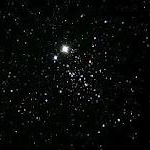 Owl Star Cluster or NGC 457: is positioned near the constellation Cassiopeia and was discovered by William Herschel. There are about 150 stars located in this cluster.
Owl Star Cluster or NGC 457: is positioned near the constellation Cassiopeia and was discovered by William Herschel. There are about 150 stars located in this cluster.
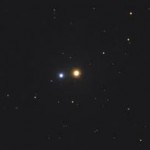 Alberio: is actually part of a binary star system, in which two stars revolve around each other; there is a bright yellow star who is partnered with a fainter blue star. Part of the constellation Cygnus or the Swan.
Alberio: is actually part of a binary star system, in which two stars revolve around each other; there is a bright yellow star who is partnered with a fainter blue star. Part of the constellation Cygnus or the Swan.
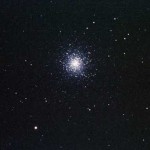 M13 was explained as salt spilled on a dinner plate. It is a bit dull at first, but once we were given clues as to what to look for, it was easy to identify.
M13 was explained as salt spilled on a dinner plate. It is a bit dull at first, but once we were given clues as to what to look for, it was easy to identify.
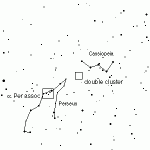 Example of double cluster in Perseus and Cassiopeia
Example of double cluster in Perseus and Cassiopeia
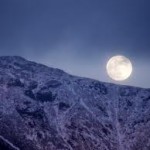 Full Moon over Lafayette – “the full moon rises over Mount Lafayette’s shoulder”
Full Moon over Lafayette – “the full moon rises over Mount Lafayette’s shoulder”
On September 28th, there is another chance to come view the night sky in the notch! Don’t miss your chance to see Dr. Doug Arion, professor of astronomy and physics. He will begin an indoor presentation, starting at 6pm at the Franconia Notch State Park Headquarters. Take exit 34B and go through the Cannon Aerial Tramway parking lot towards Echo Lake. After the indoor presentation, depending on the weather, there will be an opportunity to use telescopes and an outdoor presentation will be at Profile Field, which is near the Cannon Aerial Tramway parking lot, just off of the bike path. If there is inclement weather, call the hiker information center before 5:30pm to verify that the program is still on.
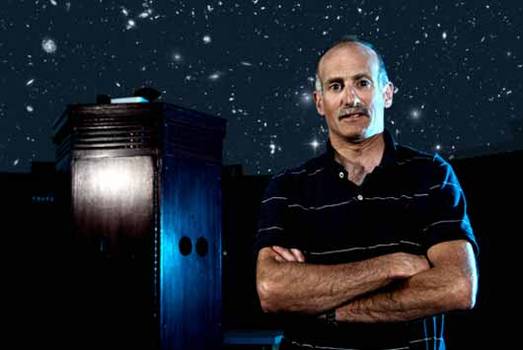
**It’s easy to get to Franconia Notch State Park and park headquarters! – You can access the park directly from I-93!
Take Exit 34B – Cannon Mountain Tramway, New England Ski Museum, Old Man Museum, Gift Shop, Rest Rooms.
-After you reach this destination continue to the right towards Echo Lake (you will pass Cannon Aerial Tram for the time being) and you will see the Park Headquarters. Enter the building and the room for the presentation will be immediately on your left!
